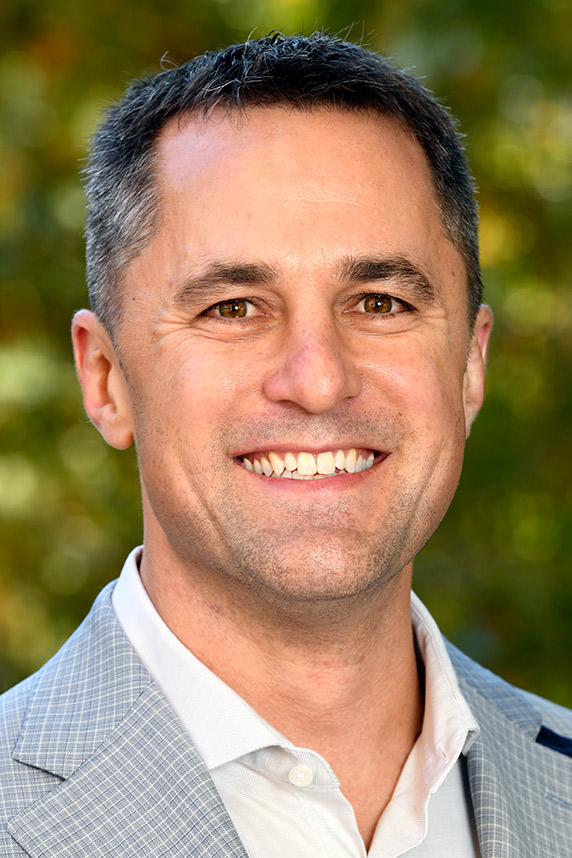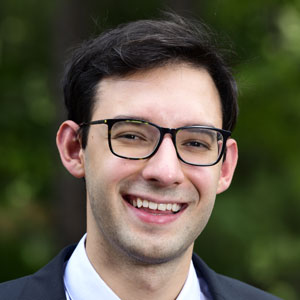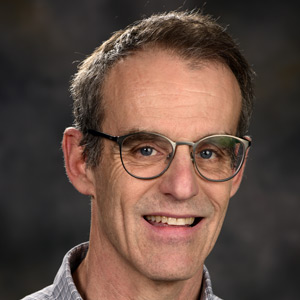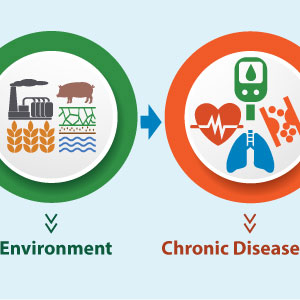Last October, David Reif, Ph.D., joined what he calls his “dream team” in the NIEHS Division of Translational Toxicology. As head of the Predictive Toxicology Branch, he leads a multidisciplinary group focused on predicting how individuals and populations respond to environmental exposures. The group aims to improve public health through the development and promotion of cutting-edge, computer-based methods and research models.
Reif recently talked with Environmental Factor about why he transitioned from academia to NIEHS, his journey from genetics to toxicology, and what most excites him about the future.

Environmental Factor: What drew you to NIEHS?
David Reif: Team science. I’m a data scientist who enjoys tackling big problems that require expertise beyond my own. I had been a professor for 10 years. I really liked it, but I found that the projects that most motivated me were those involving long-term collaborations. I had been following and using team-built tools coming out of NIEHS, teaching them to my students and incorporating them in my own research. Then this opportunity came up, and I thought it would be great to be on the inside to advance translational toxicological research and predict how gene-by-environment interactions can influence human health.
EF: What makes the Predictive Toxicology Branch unique?
DR: We have a mix that doesn’t exist anywhere else in world. It’s basically my dream super lab, my dream team. We have computational quantitative biologists, computational chemists, scientists working on geospatial health analytics, and researchers promoting in vitro [cell-based] models and new approach methodologies, all together in one branch.
EF: Can you share how your education and training shaped your career path?
DR: My graduate training was in human genetics and statistics, but I really wanted to study environmental health problems. At that time, in my view, the tools for measuring the environment’s impact on health were unsophisticated. But scientists had just mapped the human genome, so it was an exciting time, and it felt like everything was possible.
I completed postdoctoral training at the U.S. Environmental Protection Agency, in the just-launched National Center for Computational Toxicology, which had the atmosphere of a startup company. The new center marked the beginning of programs to rapidly test all the chemicals we didn’t know about. I was there for seven years as a statistician [principal Investigator], and I really invested in the field. I took formal courses in toxicology, and I started going to Society of Toxicology conferences. I stayed in the toxicology and environmental health research space as a professor at North Carolina State University, even though I joined a genetics department.
EF: Is the shift from genetics to toxicology common?
DR: I don't know if it's common, but I think it's conducive because genetics is a mechanism for both responding to the environment in the near term and a way to transmit information across generations. And you can apply genetics and genomics to lots of different kinds of problems. In some projects here, I'm full circle back to doing clinical studies involving human exposures, but now we have a vastly more sophisticated characterization of the environment to consider.
For example, the exposome, which represents the totality of our environmental exposures, could not be effectively measured back when I was training. Huge progress has been made recently, much like genetic and genomics technologies advanced quickly when I was earning my Ph.D. I feel like we're now in the exposomics era, and it's letting new kinds of science come to the fore.
EF: What is your vision for the Predictive Toxicology Branch?
DR: We have an opportunity to use machine learning, artificial intelligence, and many other cutting-edge tools to produce scientific knowledge that translates directly to human health. It is truly predictive data science that doesn't exist elsewhere because we can make a prediction, build models based on tons of data, and then test those in new experiments. We can predict what we think is going happen, and we can generate the data to validate that prediction.
I want our branch to be a destination for people to come and learn these skills, to establish the branch as a center of excellence for training, and to attract the best scientific talent.
EF: With many chemicals in the environment today, what should the average person know?
DR: One of the best things about government science is that it doesn't have an agenda. It’s about truth and robustness. I'm hoping that we can provide those things to people, so when they ask questions about what they are exposed to and how to avoid harm, we can be a trusted source for that information.
I think we're at a cool inflection point where the confluence of technology, talent, and awareness are all coming together. Things have to change, and we're ready to change them.
(Caroline Stetler is Editor-in-Chief of the Environmental Factor, produced monthly by the NIEHS Office of Communications and Public Liaison.)









